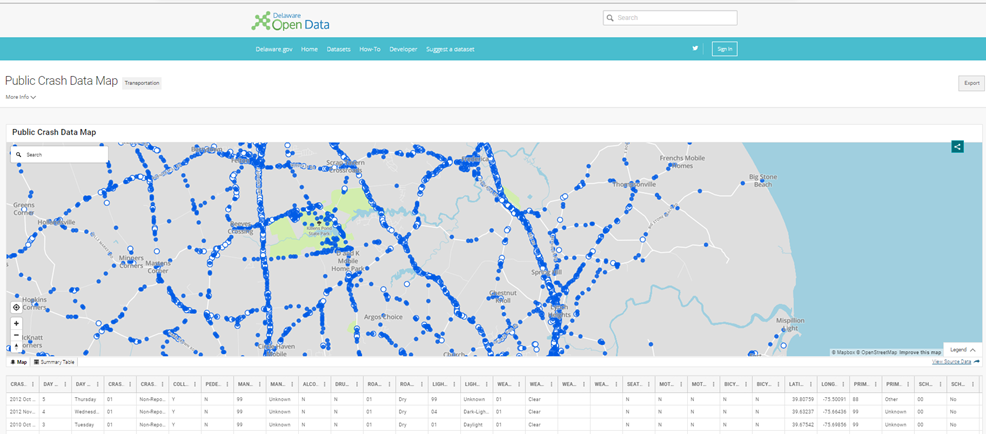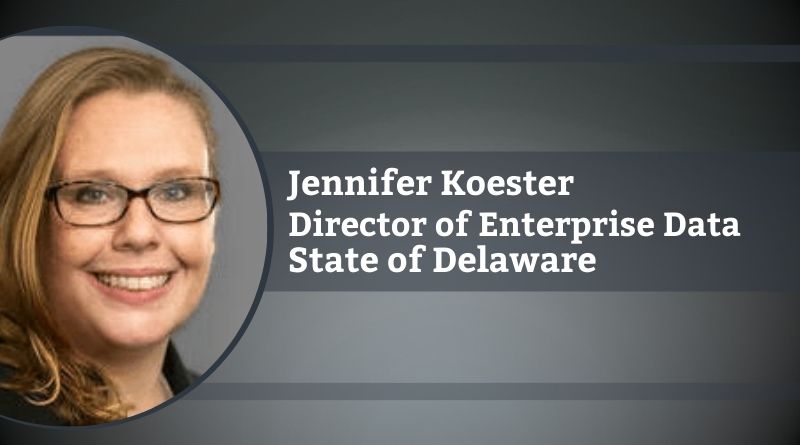Embedded Collaboration – How Diversity and Partnership Lead to Improved Data Insights
By Jennifer Koester, Director of Enterprise Data, State of Delaware
Data teams across the globe are investing in new technology to gain increased or nuanced truths from data. Artificial intelligence, for example, has made strides regarding data classification, cataloging, quality, security, and integration (Davenport & Redman, 2022). While expanding technology is crucial for evolving data science, so too is re-examining how data teams work together to generate new ideas.
Any data team’s greatest asset is its staff. However, organizations often consider an individual’s unique insights to be anecdotal or of little value. This view is problematic in two ways: diverse staffing has a demonstrated positive impact on work quality and disregarding a teammate’s experiences (personal and professional) limits overall vision. Several studies support this and posit that diverse organizations are up to:
- 35% more likely to outperform competitors. (Hunt et al., 2015)
- 70% more likely to capture new markets. (Hewlett et al., 2013)
- 87% better at decision-making. (Larson, 2017)
- 170% more innovative. (Bersin, 2015)
- Additionally, in organizations without diverse leadership, “…women are 20% less likely than straight white men to win endorsement for their ideas; people of color are 24% less likely; and LGBT individuals are 21% less likely” (Hewlett et al., 2013).
Embedding collaboration at all project phases has provided Delaware with more robust end results, more efficient communication, innovative and accessible tools, and a more holistic view of what residents want or need.
Taking advantage of diversity’s benefits, organizations should invest in collaboration during all opportunities. Embedded collaboration, fostering partnership at all project phases, allows for perspective and skill set diversity from the beginning. Many leaders are currently fostering deep collaboration in all project phases to capitalize on benefits. For example, the State of Delaware uses a highly collaborative approach when managing its Open Data Portal (Delaware, 2023). Instead of working in a vacuum and simply publishing applicable state data when a need arises, the Open Data team forms a core project group for sizable new initiatives. This group develops a holistic plan that will not only publish data but also determine what data visualizations and analyses are needed. Core project groups are intentionally diverse regarding background, agency/division, and specialization.
For example, if a state agency in Delaware has a requirement to post data publicly, the Open Data team meets with the agency to determine a broad data plan. Often, an agency or division has a requirement to post a segment of data, but actually tracks a much larger dataset internally. In these cases, having the PowerBI team collaborate with Open Data’s team from the beginning may help develop a more streamlined and comprehensive data plan. While Open Data is developing a transparent dataset for the public, the PowerBI team can design an agency tool. This collaborative, simultaneous format limits communication gaps, pauses in service delivery, and inconsistent perspectives. Both tools can pull from the same source of truth and ensure metrics or business rules are consistent among tools.
One instance of embedded collaboration relates to Delaware’s publicly available automobile crash data. Signed in 2021, Delaware Senate Bill 28 required the publication of a variety of traffic data (Delaware General Assembly, 2022). This information was requested by residents and advocacy groups to petition for stoplights and other public safety resources. Instead of only posting the data in tabular form, a core group was formed, including several agencies, workgroups, and legal authorities, to determine what data tools should be included. Embedding collaboration meant including the GIS workgroup in initial discussions, even though their specific tool (i.e., map) would not be developed for a year. This allowed for proactive insights, ultimately saving overall project time and money. For example, the GIS team knew to initially include several fields that otherwise would have been appended later. Adding new data to an existing dataset or data product can significantly increase project time by requiring new data-sharing agreements, new integrations, and additional data cleansing. The GIS team also added unique perspectives regarding early data visualization that would have been missing in a less collaborative environment.
For the Crash Data feature, information was integrated from several disparate agency datasets to create a comprehensive view for the public (See Figure 1). For this initiative, the core group included professionals from GIS, PowerBI, and Data Management workgroups. This allowed for an accurate geospatial component and an option to export for research, as well as fulfilling the limited legal requirement to post the data tabularly:

Embedding collaboration at all project phases has provided Delaware with more robust end results, more efficient communication, innovative and accessible tools, and a more holistic view of what residents want or need. Though this model does add additional meeting time, it drastically reduces drafts and phases while adding unique and robust insights at all project stages. Deep collaboration requires a supportive manager to help organize and divert work, a friendly and safe environment for idea sharing, and a tool the entire team can access (e.g., a “team” in Microsoft Teams).
Sources:
Bersin, Josh, 2015. Why Diversity and Inclusion Has Become a Business Priority, https://joshbersin.com/2015/12/why-diversity-and-inclusion-will-be-a-top-priority-for-2016/
Davenport and Redman, 2022. How AI Is Improving Data Management, https://sloanreview.mit.edu/article/how-ai-is-improving-data-management/
Delaware Department of Technology and Information. “Delaware Data – Delaware.gov: Official Website of the State of Delaware | Delaware Open Data Portal.” Delaware Open Data Portal, data.delaware.gov. Accessed 29 July 2023.
Delaware General Assembly, 2022. “Delaware Senate Bill 28”. https://legis.delaware.gov/BillDetail?LegislationId=48261
Hewlett, Marshall, and Sherbin, 2013. How Diversity Can Drive Innovation, https://hbr.org/2013/12/how-diversity-can-drive-innovation
Hunt, Layton, and Prince, 2015. Why Diversity Matters, https://www.mckinsey.com/capabilities/people-and-organizational-performance/our-insights/why-diversity-matters
Larson, Erik, 2017. New Research: Diversity + Inclusion = Better Decision Making At Work, https://www.forbes.com/sites/eriklarson/2017/09/21/new-research-diversity-inclusion-better-decision-making-at-work/?sh=40b909df4cbf

